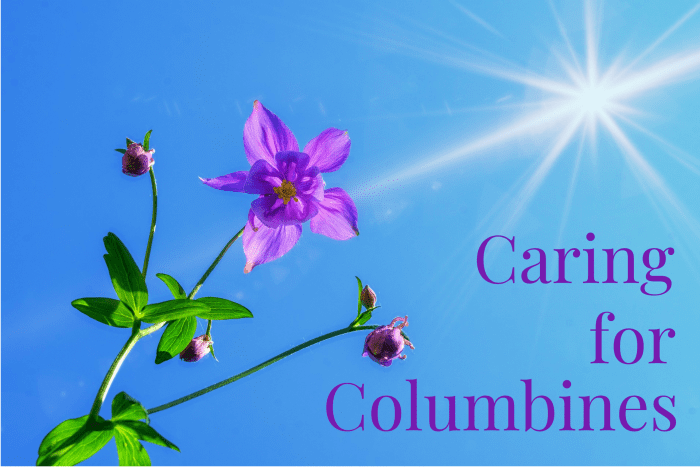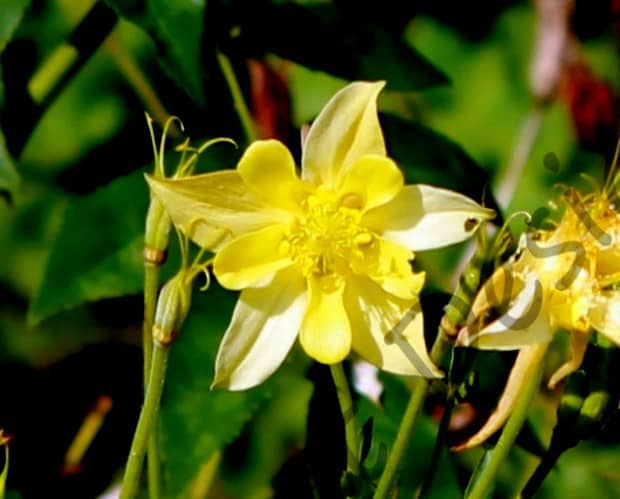Easy to Care for Flowers in Wisconsin
How to Grow and Care for Columbine Flowers
The stunning columbine flowers remind me of dancing butterflies.

Columbines are surprisingly easy-to-grow perennials that add a layer of delicate beauty to any garden.
CC-BY-2.0, via Pixabay
Growing the Beautiful Columbine Flower
Columbines (Aquilegia) are low-maintenance perennials that are a must for any garden. They produce short-lived delicate flowers that remind me of dancing butterflies, bringing about an abundance of color that adds quite a bit of interest to garden borders, beds, and containers.
The flowers come in a variety of colors, shapes, and sizes, so choosing one that complements your garden should not be difficult. Better yet, once established, they are easy to grow, because they are self-sowers, drought tolerant, and need very little maintenance.

Columbines come in a wide array of brilliant colors.
Where Should You Plant Your Columbines?
Although their flowers last for only a short time, they have a moderate blooming season, usually from mid-spring to early summer. However, a few of mine here in Charleston, South Carolina, hung on past the end of August! Columbines grow best in USDA zones 3 to 10 and prefer sunny to partial shady areas (usually meaning about six hours of morning sun—not the hot baking sun of the day).
They're also perfect for rock gardens and woodland settings. I live in the city but have a courtyard in the back that is sunny in the early morning and shady in the afternoon—they love it there.

Columbines love morning sun and a bit of shade in the hotter parts of the afternoon.
CC-BY-2.0, via Pixabay
How to Care for Columbines
Here are some helpful tips for how to best care for your columbine plants:
- Size: They will grow to about 2 feet tall and 36 inches wide, so plant them by themselves or in small groups. This also depends on the species you purchase, as they also have dwarf-size columbines that range from 6 to 12 inches tall. The flowers range from 1–1.5 inches wide (across), and they have spurs.
- Soil: They like well-drained, humus-rich soil.
- Sowing: Columbines self-sow, so you will have more next year unless you deadhead.
- Longevity: They last about three to four years. However, if you let them self-sow, you will have an endless supply. You might even end up with some different colors, because they also cross-pollinate.
- Pests: Leaf miners tend to be a problem. They create silvery lines (tunnels) under the surface of the leaf. If you see this, just cut away the infected area, and do NOT throw it back in the garden. (Just throw it away.)
- Deer: They are deer resistant.
- Pollinators: Hummingbirds and butterflies love columbines.
- Pairing: Keep in mind that once their beautiful blooms begin to die back, they do tend to become quite unattractive. So be sure to pair them with other plants that provide color, either with flowers or foliage, to keep your garden looking its best.

Even as their blooming season draws to a close, healthy columbines can often still provide glimpses of beauty.
Scroll to Continue
Read More From Dengarden
A Quick Guide for Easy Care
| Location | Cultivation | Soil and Water |
|---|---|---|
| Sunny to Partially Shady | Self-sower. | Moist, but well-drained soil. |
| Rock Gardens | Sow seeds in early spring in around 65 degrees Fahrenheit weather. | Water well in hot summer. |
| Woodlands | Transplant them in early spring. | Maintain moisture and nutrients in soil. |
| Containers | Propagate by dividing the root in spring or early fall. | Once established, it can survive a drought. |
| Borders | No winter care—except young plants. Mulch in the first year. | Prefers humus-rich soil. |

Columbines prefer moist but well-drained soil. Once they've established themselves, however, they can often survive periods of drought.
Columbine Seeds Can Be Poisonous
Before going out and purchasing enormous quantities of this beautiful plant, there is something important you should know. Namely, columbines are from the buttercup family, and the seeds they produce are poisonous!
So if you have young children or pets, please be wary of where you place these flowers in your garden. If they are planted where children and pets can reach them, try to address the concern by deadheading the plant so that the seed pods are not readily available for those little inquisitive hands to inspect.
Can columbines be used for medicinal purposes?
You may also hear that the seeds have a medicinal value for the treatment of liver and gallbladder problems. This was once thought to be true. However, it was realized over time that eating, cooking, or developing medicines with the seeds proved to be lethal.
Today, it is believed that small doses of the seed extract can be used for medicinal values, but please leave this up to the pharmaceutical companies and other experts. Home gardeners should not delve into home remedies using these seeds, as they might lead to fatal consequences.

As wonderful as they are to look at, the seeds of the columbine can be poisonous. So be careful where you plant them, especially if you have young children or pets.
What Should You Plant Alongside Columbines?
Here are a few plants that make excellent complements to columbines:
- Phlox: Plant them along the border of columbines.
- Coleus: They look fantastic in front of columbines, as long as you keep the coleus pinched. (Don't let it get lanky.)
- Toad Lily: An excellent choice because just as columbine starts to die down, toad lily starts to show off its blooms for the fall.
- Coreopsis: The bright yellow flowers make for an interesting contrast.
- Foamflower: They look amazing in front of columbines once the latter dies down. Foamflowers have a nice contrast to columbines' foliage.
- Ferns: Plant them as a nice backdrop to further accentuate the columbines.
These are just a few suggestions—you can pair almost anything with columbines. Just bear in mind the different light, soil, and water requirements for each plant, and try to pair each selection with a companion that requires similar care and conditions.

For those who are still leery about columbines, rest assured that it's an excellent choice for the garden. Not only is it a self-sower, drought resistant, and attractive to hummingbirds, it is also low maintenance and beautiful, too. Happy gardening!
© 2013 bellartdesigns
Related Articles
Source: https://dengarden.com/gardening/Columbine-Growing-Facts
0 Response to "Easy to Care for Flowers in Wisconsin"
Postar um comentário